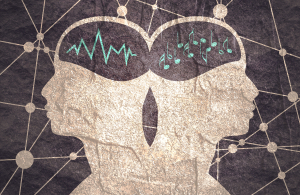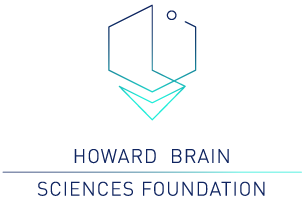Both globally and in the United States, twenty percent of the population suffers from chronic pain (Goldberg and McGee, 2011; Dahlhamer et al., 2018). Opioids are one of the most common treatments for pain and have been increasingly prescribed over the past 5 years (Grosser, Woolf, & Fitzgerald, 2017).

Though effective at providing short term relief, opioids are highly addictive. Recently, the FDA has named opioid addiction a “crisis of abuse and misuse” (Research Center for Drug Evaluation and Research, 2019). The current cost of this epidemic in the United States was roughly $80 billion in 2016 (Grosser, Woolf, & Fitzgerald, 2017). Additionally, 67.8% of overdose deaths are due to opioids (Center for Disease Control, 2019). While “the FDA has reacted with revised drug labeling, approved formulations…, educational initiatives, and the collection and disposal of unused drugs,” experts articulate that these initiatives must be combined with novel research on pain and an “expansion of the repertoire of nonaddictive analgesics” (Grosser, Woolf, & FitzGerald , 2017).
This is especially needed as “no analgesic drugs directed at novel targets have been approved in the past 5 years” (Grosser, Woolf, & FitzGerald , 2017). However, other experts recognize “a need for a more holistic approach in pain management which will help integrate all aspects of health” (Krishnaswamy & Nair, 2016). In short, pharmacological pain management is best used in conjunction with alternative treatments. Two such are music therapy and transcranial direct current stimulation (tDCS).
One proposed framework for how music therapy helps patients consists of three pathways by which music reduces pain: affective, cognitive, and sensory (Magill-Levreault, L., 1993). The affective role of music is that it reduces “disturbances associated with long-term and life-threatening illnesses, such as anxiety depression, fear, anger, and sadness,” which would thus “diminish tension and anxiety” (Magill-Levreault, L., 1993). Cognitively, music “provides a means for distracting attention away from pain,” both “carrying a person’s thoughts away from the noxious stimuli” and “[providing] a means for engaging familiar skills” such as music performing or listening (Magill-Levreault, L., 1993). Lastly, the proposed sensory role of music is the counter-stimulation of the afferent fibers (Magill-Levreault, L., 1993).
Our Fellow, Wisam Reid, holding a master’s degree in Music, Science & Technology from Stanford University and now completing his doctorate at Harvard Medical School, noted a study by Bernatzky, Presch, Anderson, and Panksepp (2011). Their research has found that music therapy acts upon the brain’s limbic system (Bernatzky et al., 2011). The nucleus accumbens, known as the brain’s “pleasure center,” processes this information, which leads to several widespread effects (Bernatzky et al., 2011). These effects include activating self-repair mechanisms, which can replace or reduce the need for pharmaceuticals (Bernatzky et al., 2011).
Music therapy is low cost, easy to introduce, and has no adverse side effects (Radcliffe and Porterfield, 2018; Bernatzky et al., 2011). A 2006 review music therapy studies found that patients on average report 0.5 points less pain on a 10 point scale when exposed to music therapy, as well as required lower doses of morphine post-surgery (Cepeda, Carr, Lau, Alvarez, 2006). This matches data from a more recent study by Radcliffe & Porterfield (2018), who found repeated music therapy reduced patient’s self-reported anxiety, self-reported pain, and blood pressure, and recommended music therapy as an adjunct treatment to analgesics . Music therapy has been shown to be effective in lowering anxiety, diminishing pain and relieving muscle tension in cancer patients, bone marrow transplant patients post operative care patients, burn victims, general pain management, chronic non-malignant pain patients, and palliative care patients amongst other forms of pain (Krishnaswamy & Nair, 2016; Gutgsell et al., 2013; Siedliecki, & Good, 2006; Tan, Yowler, Super, & Fratianne, 2010). It is also associated with a higher quality of life even amongst terminal patients (Gutgsell et al., 2013).
TDCS, like music therapy, is non-invasive. TDCS consists of stimulating the cerebral cortex via electrodes (Fregni et al., 2006). This “modulates cortical excitability in the human motor and visual cortex, with modulatory effects remaining after stimulation (Fregni et al., 2006). One model of tDCS proposes it “may work by strengthening or weakening synaptic transmission between neurons by augmenting synaptic plasticity” as it “augments the resting voltage of the neuronal membrane” (Neuromodec, 2020). Aside from chronic pain, tDCS is being researched as a treatment for depression, schizophrenia, aphasia, addiction, epilepsy, attention disorders, and motor rehabilitation (Neuromodec, 2020).
In the case of spinal cord injury, experts suggest that “because pain in these patients is associated with dysfunctional brain activity… rather than overall increased input from peripheral pain receptors, a treatment that targets central structures might be the most adequate” (Fregni et. al., 2006). Experts have also found that spinal cord injury patients who were administered tDCS self-reported less pain compared to a sham group (Fregni et. al., 2006). Similarly, tDCS administration reduced pain in fibromyalgia patients at both the time of administration and 30 minutes after administration (Villamar et. al., 2013). tDCS has also been shown to cause reductions in self-reported pain in multiple sclerosis and chronic migraine patients (Ayache et al., 2016; DaSilva et al., 2012).
Currently, tDCS has not been approved by the FDA, though it can be given as an “off-label” treatment (Neuromodec, 2020). However, in the European Union, tDCS is an approved treatment for pain and depression (Neuromodec, 2020). Music therapy has long existed in a variety of cultural beliefs and practices but has existed in its current practice in America since the 1940s (American Music Therapy Association, 2020). In the United States becoming a licensed music therapist requires registering with the American Music Therapy Association, though the practice is used by a variety of professionals (American Music Therapy Association, 2020). Lastly, acupuncture has also been recognized for its analgesic effects (Audette & Ryan, 2004). All three treatments are non-addictive, non-pharmacological, and low cost. This combination of factors makes the three treatments easy to administer and/or add to pre-existing pain management regimens.
More can be learned about music therapy from the American Music Therapy Association, while for more on tDCS we recommend this review of literature from ScienceDirect. If you or a loved one are suffering from chronic pain, the International Association for the Study of Pain lists organizations worldwide committed to pain relief, or you can reach out to our Patient Advocacy program at patientadvocacy@brainsciences.org.
Written by Senia Hardwick
References
American Music Therapy Association. (2020). History of music therapy | history of music therapy | american music therapy association(Amta). https://www.musictherapy.org/
Audette, J. F., & Ryan, A. H. (2004). The role of acupuncture in pain management. Physical Medicine and Rehabilitation Clinics of North America, 15(4), 749–772. https://doi.org/10.1016/j.pmr.2004.03.009
Ayache, S. S., Palm, U., Chalah, M. A., Al-Ani, T., Brignol, A., Abdellaoui, M., Dimitri, D., Sorel, M., Créange, A., & Lefaucheur, J.-P. (2016). Prefrontal tdcs decreases pain in patients with multiple sclerosis. Frontiers in Neuroscience, 10. https://doi.org/10.3389/fnins.2016.00147
Bernatzky, G., Presch, M., Anderson, M., & Panksepp, J. (2011). Emotional foundations of music as a non-pharmacological pain management tool in modern medicine. Neuroscience & Biobehavioral Reviews, 35(9), 1989–1999. doi:10.1016/j.neubiorev.2011.06.005
Center for Disease Control. (2019, August 30). Drug overdose deaths. https://www.cdc.gov/drugoverdose/data/statedeaths.html
Cepeda, M.S., Carr, D. B., Lau, J, & Alvarez, H. (2006). Music for pain relief. Cochrane Database of Systematic Reviews, Issue 2. Art. No.: CD004843. DOI: 10.1002/14651858.CD004843.pub2. Retrieved from https://www.cochranelibrary.com/cdsr/doi/10.1002/14651858.CD004843.pub2/full
DaSilva, A. F., Mendonca, M. E., Zaghi, S., Lopes, M., DosSantos, M. F., Spierings, E. L., Bajwa, Z., Datta, A., Bikson, M., & Fregni, F. (2012). Tdcs-induced analgesia and electrical fields in pain-related neural networks in chronic migraine. Headache: The Journal of Head and Face Pain, 52(8), 1283–1295. https://doi.org/10.1111/j.1526-4610.2012.02141.x
Dahlhamer, J., Lucas, J., Zelaya, C., Nahin, R., Mackey, S., DeBar, L., Kerns, R., Von Korff, M., Porter, L., & Helmick, C. (2018). Prevalence of chronic pain and high-impact chronic pain among adults—United states, 2016. MMWR. Morbidity and Mortality Weekly Report, 67(36), 1001–1006. https://doi.org/10.15585/mmwr.mm6736a2
Fregni, F., Boggio, P. S., Lima, M. C., Ferreira, M. J. L., Wagner, T., Rigonatti, S. P., Castro, A. W., Souza, D. R., Riberto, M., Freedman, S. D., Nitsche, M. A., & Pascual-Leone, A. (2006). A sham-controlled, phase II trial of transcranial direct current stimulation for the treatment of central pain in traumatic spinal cord injury: Pain, 122(1), 197–209. https://doi.org/10.1016/j.pain.2006.02.023
Goldberg, D. S., & McGee, S. J. (2011). Pain as a global public health priority. BMC Public Health, 11(1), 770. https://doi.org/10.1186/1471-2458-11-770
Grosser, T., Woolf, C. J., & FitzGerald, G. A. (2017). Time for non addictive pain relief. Science, 35(6329), 1026–1028.
Gutgsell, K. J., Schluchter, M., Margevicius, S., DeGolia, P. A., McLaughlin, B., Harris, M., Mecklenburg, J., & Wiencek, C. (2013). Music therapy reduces pain in palliative care patients: A randomized controlled trial. Journal of Pain and Symptom Management, 45(5), 822–831. https://doi.org/10.1016/j.jpainsymman.2012.05.008
Krishnaswamy, P., & Nair, S. (2016). Effect of music therapy on pain and anxiety levels of cancer patients: A pilot study. Indian Journal of Palliative Care, 22(3), 307–311. https://doi.org/10.4103/0973-1075.185042
Magill-Levreault, L. (1993). Music therapy in pain and symptom management. Journal of Palliative Care, 9(4), 42–48. https://doi.org/10.1177/082585979300900411
Neuromodec. (2020). What is transcranial direct-current stimulation (Tdcs)? Retrieved from https://neuromodec.com/what-is-transcranial-direct-current-stimulation-tdcs/
Radcliffe, J. A., & Porterfield, S. (2018). Music therapy and post-operative pain. Retrieved from https://diginole.lib.fsu.edu/islandora/object/fsu%3A550173/
Research Center for Drug Evaluation and Research. (2019). Opioid medications. FDA. http://www.fda.gov/drugs/information-drug-class/opioid-medications
Siedliecki, S.L. and Good, M., 2006. Effect of music on power, pain, depression and disability. Journal of advanced nursing, 54(5), pp.553-562.
Shabanloei, R., Golchin, M., Esfahani, A., Dolatkhah, R., & Rasoulian, M. (2010). Effects of Music Therapy on Pain and Anxiety in Patients Undergoing Bone Marrow Biopsy and Aspiration. AORN Journal, 91(6), 746–751. doi:10.1016/j.aorn.2010.04.001
Tan, X., Yowler, C.J., Super, D.M. and Fratianne, R.B., 2010. The efficacy of music therapy protocols for decreasing pain, anxiety, and muscle tension levels during burn dressing changes: a prospective randomized crossover trial. Journal of Burn Care & Research, 31(4), pp.590-597.
Villamar, M. F., Wivatvongvana, P., Patumanond, J., Bikson, M., Truong, D. Q., Datta, A., & Fregni, F. (2013). Focal modulation of the primary motor cortex in fibromyalgia using 4×1-ring high-definition transcranial direct current stimulation (HD-tDCS): Immediate and delayed analgesic effects of cathodal and anodal stimulation. The Journal of Pain, 14(4), 371–383. https://doi.org/10.1016/j.jpain.2012.12.007
